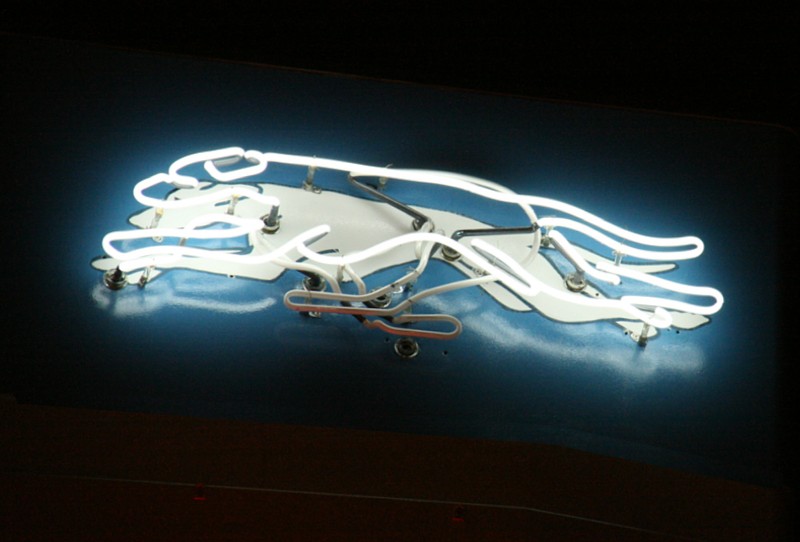Greyhound Terminal, Binghamton NY
Introduction
Text-to-speech Audio
Images
Night view

Neon running greyhound, position 1

Neon running greyhound, position 2

Backstory and Context
Text-to-speech Audio
Built in 1938, the Binghamton Greyhound Bus terminal has been in continuous operation since that time. The architectural style of the building is known as Streamline Moderne, a form of Art Deco design evident in many Greyhound bus terminals built between 1937 and the mid 1940’s.
Intended to depict aerodynamics and a sense of speed, the design is attributed to Louisville architect William S. Arrasmith, who designed over sixty moderne Greyhound terminals in his career, of which only a half-dozen exist today.
In his book “The Streamline Era of Greyhound Terminals: the architecture of W.S.Arrasmith,” author Frank Wrennick wrote of the Binghamton terminal: “the façade featured cast stone details including scalloped cornice window reveals, the block-lettered word ‘Greyhound,’ and a running greyhound. Glass block was employed over the main street entrance and in a wing wall which concealed the bus docks from the street.” High above the main entrance neon glass tubing is formed into the shape of a running greyhound dog.
In 2009 a new transportation center was constructed on the site. At that time the original building façade was restored and incorporated into the new structure.
